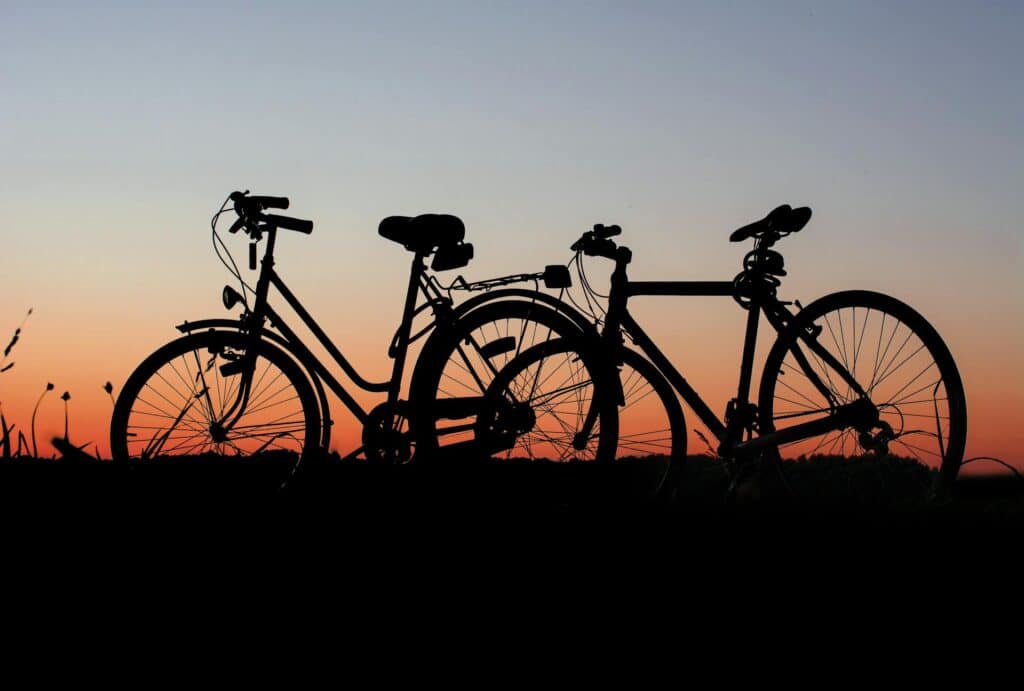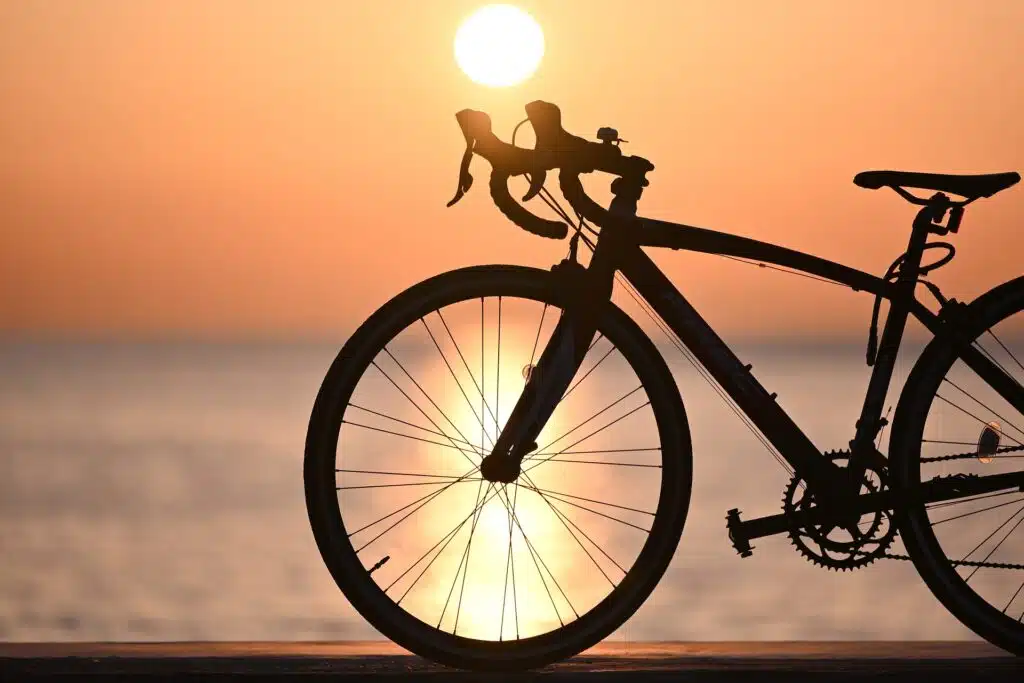Roadworthy bicycles are essential for safety in road traffic and are even legally required in some countries. In this article, you’ll learn what makes a bicycle roadworthy, what legal requirements apply according to the German StVZO and StVO, and how you should equip your bike accordingly.
What Do "Roadworthy Bicycles" Mean?
A roadworthy bicycle meets the legal requirements of the German Road Traffic Licensing Regulations (StVZO), thereby ensuring the safety of both the rider and other road users. The StVZO specifies which equipment a bicycle needs in order to be used in public traffic.
The german Road Traffic Licensing Regulations (StVZO) and Its Requirements
The StVZO regulates the technical requirements for all vehicles used on public roads in Germany, including bicycles. For bicycles, Sections 63 to 67 are particularly relevant.
You can read the StVZO on the website of the Federal Ministry of Justice here.
Bicycles with Road Approval: What Requirements Must Be Met?
According to § 63a StVZO, a bicycle is a vehicle with at least two wheels that is powered solely by human muscle force via pedals or hand cranks.
This also includes pedelecs (pedal-assist e-bikes) with electric support up to 25 km/h, as well as bikes with start-up aids up to 6 km/h without pedaling.
Important: Such bicycles may only be used on public roads if they were built in compliance with the latest technical standards and fulfill the provisions of the StVZO and other relevant official regulations, which we will explain in more detail below.

Making Your Bicycle Roadworthy: The Legally Required Safety Equipment
The StVZO defines the following minimum equipment required to ensure a bicycle is roadworthy:
Bicycle Lights: What Lighting Is Mandatory?
Bicycles must have functional lighting that ensures both visibility for the rider and visibility to others.
- Front headlight: A white, non-glare light is required. It must be permanently mounted and powered either by a dynamo or batteries.
- Rear light: A red rear light is also mandatory. It must be permanently mounted and may also be battery- or dynamo-powered.
- Additional lighting: Some bicycles have additional lights, such as parking lights, to further enhance visibility. These are not legally required. If you choose to use additional lights, they must not cause glare.
- Dynamo requirement? There is no longer a legal requirement for lights to be powered by a dynamo. Battery-powered lights are allowed as long as they are sufficiently bright.
Brakes and Bell: Mandatory Equipment
Brakes and a bell are essential parts of roadworthy bicycles:
- Brakes: Each bicycle must have two independently operating brakes, typically one for the front and one for the rear wheel. Allowed systems include rim brakes, disc brakes, drum brakes, and coaster brakes. The brakes must be capable of stopping the bicycle quickly and safely. Regular maintenance is necessary to ensure they remain functional.
- Bell: A functional, clearly audible bell is also required. It must be easy to operate and loud enough to be heard. Other acoustic devices such as horns or electronic sounders are not allowed.
Mudguards: Are They Mandatory?
Mudguards are not explicitly required by the StVZO, but they contribute significantly to road safety. Especially in bad weather, they prevent dirt, water, or small stones from being thrown up, which could obstruct the rider or other road users.
Reflectors: Which Ones Are Required for Roadworthy Bicycles?
Reflectors are a vital addition to active lighting and increase the visibility of the bicycle in darkness or low light. The following are mandatory:
- Front reflector: A white reflector must be mounted at the front.
- Rear reflector: A large red rear reflector must be attached at the back.
- Spoke reflectors: Each wheel must have either two yellow spoke reflectors or reflective stripes on the tires.
- Pedal reflectors: Each pedal must have two yellow reflectors, one facing forward and one facing backward.
These reflectors ensure that the bicycle is visible from all directions, contributing significantly to traffic safety.
Checklist: Roadworthy Bicycles
- Two independent brakes
- Functional, clearly audible bell
- Front headlight with white light
- White front reflector (may be integrated with headlight)
- Rear light with red light
- Red rear reflector (may be integrated with rear light)
- Two yellow spoke reflectors per wheel or reflective tire stripes
- Non-slip, securely mounted pedals
- Two yellow pedal reflectors per pedal (front and rear)
Mandatory Use of Bike Paths: Where Are You Required to Ride?
Many cyclists are unsure when they must use a bike path and when they may ride on the road, which often leads to conflicts with motorists and other cyclists.
To avoid misunderstandings, the German Road Traffic Regulations (StVO) clearly define where and when cyclists must ride. In general: Bike paths must be used only when marked with one of the following signs:
- Sign 237: Mandatory cycle path (blue circle with bicycle symbol)
- Sign 240: Shared pedestrian and cycle path (blue circle with a horizontal white line, pedestrian symbol on top, bicycle on bottom)
- Sign 241: Separated pedestrian and cycle path (blue circle with vertical white line, pedestrian on the right, bicycle on the left)



If such a sign is missing, cyclists may freely choose whether to ride on the bike path or the road. Riding on sidewalks is not allowed. There are exceptions for children:
- Children up to 8 years old must ride on the sidewalk.
- Children up to 10 years old may ride on the sidewalk.
- If a structurally separated bike path is available, children up to 8 years old may use it instead of the sidewalk.
- A supervising person (at least 16 years old) may ride on the sidewalk if accompanying a child.
Conclusion: Roadworthy Bicycles
A roadworthy bicycle is crucial for your safety in traffic and is legally required in certain countires. With the right equipment – from functional lighting to brakes, bell, and mandatory reflectors – you are both safe and visible.
Check your bike regularly and retrofit it if necessary to ensure it meets road safety standards. Do the check now – does your bicycle meet all the requirements? If not, update it today and enjoy your next ride safely on the road!
Which Bike Is Right for Me? The Ultimate Bike Buying Guide
Which bike suits me? This is a question everyone asks when searching for the ideal bicycle. Whether for fast city rides, sporty tours, or off-road adventures – the variety of bike types is huge. In this bike buying guide you’ll learn about the different types and categories of bicycles, which are best suited for your needs, and what to look for when purchasing to find the perfect bike for you.
On the saddle: cycling sports
The bike is a versatile all-rounder and available in numerous versions. Some like it fast and ride road bike or gravel bike, others are looking for a little more action and use the mountain bike or BMX. In this article we present the different types of cycling. Surely there is something suitable for you.
Cycling tips and training solutions
Cycling has long been a popular activity. For beginners and riders with more experience, the fun and benefits of cycling have been numerous. As a result, the global market for bicycles shows continuing growth, aiming to reach $34.6 billion by 2027! Even if you have not been on a bike before, now is time to […]







